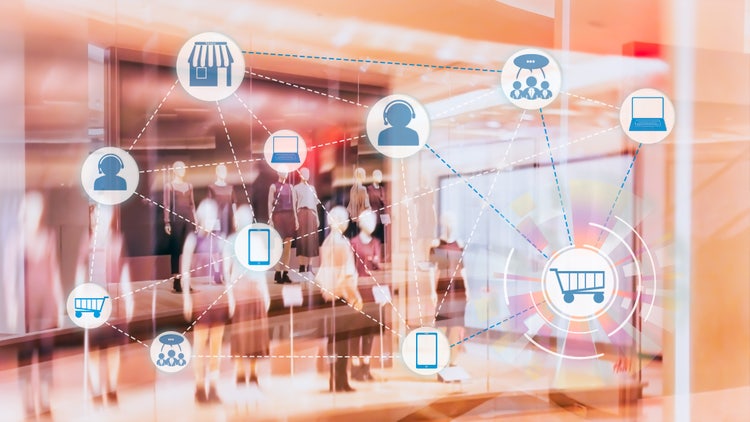How data is shaping the future of marketing and customer experience

Marketers and analysts have spent a great deal of time over the past few years analyzing changes in behavior as customers move from physical to digital commerce channels. There are several developments that require marketers to change the way they practice customer identification, segmentation, and engagement — and the first step is getting to know your data.
While it is important to understand these changes to deliver a better customer experience, it is also helpful to take a step back and look at how the change in customer behavior is creating a cascade of changes in the marketing space itself. Specifically, we are seeing several developments that require marketers to change the way they practice customer identification, segmentation, and engagement. CMOs, marketing professionals, and other leaders who understand and plan for these changes will be in the best position to gather the resources and deliver the performance that marketing requires now and into the future.
Providing value in exchange for shared data
The key resource that retailers need for CX activities is customer data. However, there is often a disconnect between the data companies request and the value that customers expect from sharing that information. For example, Adobe research found 78 percent of businesses ask customers to share their telephone numbers, but only 24 percent of customers say they’re willing to do that.
If it’s not clear to customers what value they will get from sharing a specific piece of data, they are unlikely to share it. Fifty-nine percent of consumers are willing to give companies their email address and 50 percent will offer their full name. That makes sense because of the value that marketing emails, customer accounts, and order updates can provide. However, the numbers drop sharply for other kinds of data, not just for telephone numbers. Just 30 percent say they share demographic details about themselves. Only 22 percent share their location, even though half of businesses request it.
Giving customers transparent control of their data
Customers also have valid concerns about transparency. We are seeing more and more that consumers don't trust organizations to use their data responsibly. Brands that provide transparency about how they use data can earn customers’ trust and engage with them in a more relevant and effective way.
However, Adobe’s research finds “transparency may not be enough” to win over skeptical customers. Fifty-two percent of companies say they establish trust with transparent data-handling policies. But the number one way that customers say companies can prove their trustworthiness (61 percent) is by “never sharing or selling data to other companies.” Giving customers a way to opt out of personal data use was a close second at 60 percent.
Data value exchange, transparency, trust, and control are critical because, from the marketer’s perspective, customer data is increasingly a barometer for changes in the marketplace across personas, regions, and segments.
Managing data resources
Data relationship management (DRM) is emerging to leverage first-party data in a cookieless world where brands may not have the kind of seamless access to third-party data as in the past. Add to that the fact that as channels proliferate and real-time personalized engagement becomes the CX standard, each business may have to manage hundreds or thousands of different customer experiences across segments and personas.
Starting to build a DRM program now can help businesses pull first-party data out of different organization silos such as marketing, sales, or service, and unify it. Businesses can use the data to identify customers, and leverage and collect customer insights across the organization — and throughout the customer journey. A DRM can also help organizations with another critical customer data challenge that relates to trust: data security.
Strengthening customer data security
Centralizing data management makes it easier for brands to follow best security and compliance practices. When there’s a core foundation of security practices applied to unified, unique customer profiles, it makes security updates and reporting easier as well. That could help companies close their communication and perception gaps about data exposures.
Adobe’s The Power of Data report reveals that just 39 percent of companies report data losses immediately, and 88 percent of companies that have had a data breach don’t believe it had much impact on their business. Meanwhile, 57 percent of consumers said they would stop buying from a company if they were victims of identity theft because of a data breach.
Developing new types of talent
With all of these changes playing out, marketing budgets are unfortunately not changing. Because of that, we can expect to see a sustained focus on identifying tasks that can be automated, not only within customer identification and data capture, content production, and next best actions, but also across the entire organization. That blending of marketing with automation will create a demand for more marketing talent that has both CX experience and data knowledge.
Thirty-five percent of global businesses said their biggest data priority for 2020 was training their people to understand and use data more effectively, according to those surveyed in The Power of Data. This is another situation that requires breaking down silos. Right now, in a typical organization, most data talent is on data warehousing teams while CX talent is in the agency. Going forward, we will see a convergence of these two knowledge areas to build and scale a data-savvy marketing talent pool.
Adapting to new customer behaviors requires that marketers adopt new behaviors, too. By giving customers more value for and control over their data, unifying customer data and security, expanding automation, and bringing data expertise into the marketing wheelhouse, marketers can increase brand loyalty and give their brands an advantage now and going forward.